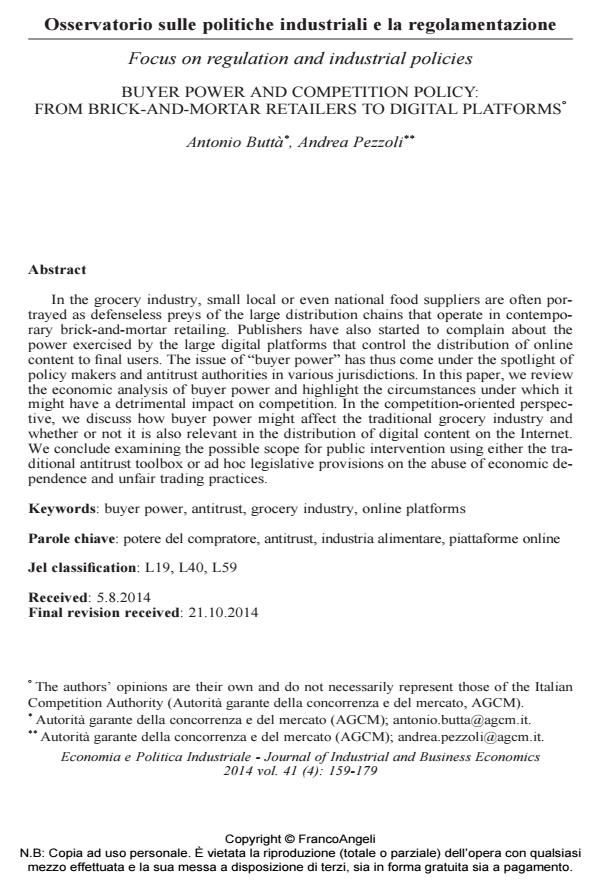Buyer power and competition policy: from brick-and-mortar retailers to digital platforms°
Journal title ECONOMIA E POLITICA INDUSTRIALE
Author/s Antonio Buttà, Andrea Pezzoli
Publishing Year 2014 Issue 2014/4
Language English Pages 0 P. 159-179 File size 71 KB
DOI 10.3280/POLI2014-004008
DOI is like a bar code for intellectual property: to have more infomation
click here
Below, you can see the article first page
If you want to buy this article in PDF format, you can do it, following the instructions to buy download credits

FrancoAngeli is member of Publishers International Linking Association, Inc (PILA), a not-for-profit association which run the CrossRef service enabling links to and from online scholarly content.
In the grocery industry, small local or even national food suppliers are often portrayed as defenseless preys of the large distribution chains that operate in contemporary brick-and-mortar retailing. Publishers have also started to complain about the power exercised by the large digital platforms that control the distribution of online content to final users. The issue of "buyer power" has thus come under the spotlight of policy makers and antitrust authorities in various jurisdictions. In this paper, we review the economic analysis of buyer power and highlight the circumstances under which it might have a detrimental impact on competition. In the competition-oriented perspective, we discuss how buyer power might affect the traditional grocery industry and whether or not it is also relevant in the distribution of digital content on the Internet. We conclude examining the possible scope for public intervention using either the traditional antitrust toolbox or ad hoc legislative provisions on the abuse of economic dependence and unfair trading practices. Jel classification: L19, L40, L59
Keywords: Buyer power, antitrust, grocery industry, online platforms
- Market Definition in Buyer Power Cases: Revisiting Some Traditional Views Ignacio Herrera Anchustegui, in SSRN Electronic Journal /2015
DOI: 10.2139/ssrn.2600471 - Emerging challenges in competition policy and regulation Maria Rosa Battaggion, Luke Garrod, Monica Giulietti, Luca Grilli, in Journal of Industrial and Business Economics /2023 pp.221
DOI: 10.1007/s40812-023-00269-x
Antonio Buttà, Andrea Pezzoli, Buyer power and competition policy: from brick-and-mortar retailers to digital platforms° in "ECONOMIA E POLITICA INDUSTRIALE " 4/2014, pp 159-179, DOI: 10.3280/POLI2014-004008